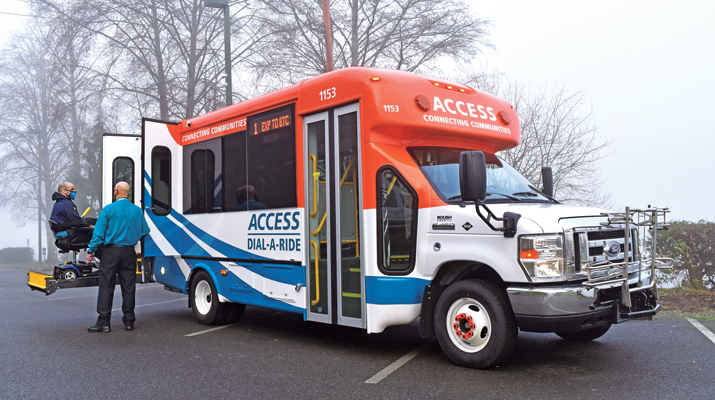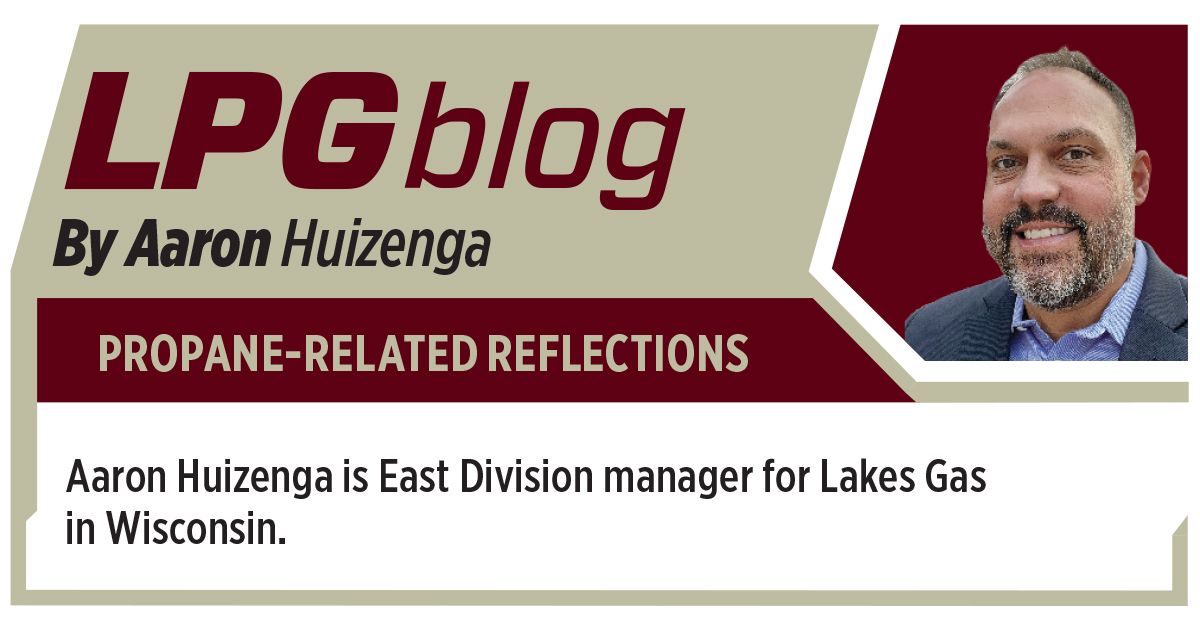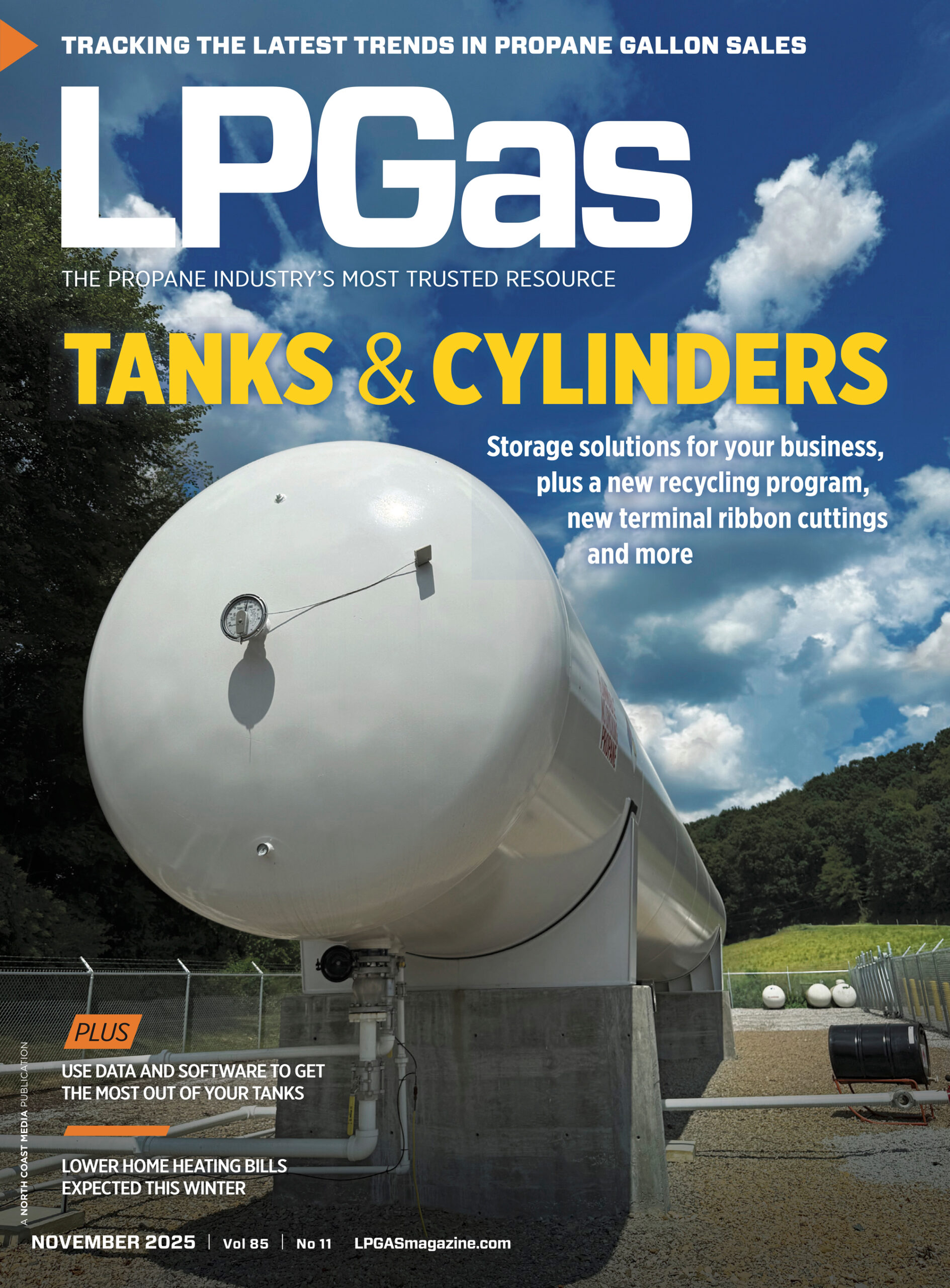LPG Spotlight: Kitsap Transit

According to the Propane Education & Research Council, there are more than 7,000 propane paratransit buses across the United States.
Seventy five of those buses are in Kitsap County, outside Seattle.
Kitsap Transit is the public transit agency serving Kitsap County. The agency transports more than 3.5 million riders each year. It also offers ACCESS, a paratransit service for seniors and people with disabilities. Currently, Kitsap Transit operates 75 ACCESS vehicles, each averaging 28,000 miles per year.
The agency began looking for paratransit buses with cleaner emissions that would also help lower its fuel costs and found a solution in Roush CleanTech’s Ford E-450 propane paratransit buses.
In 2015, Kitsap Transit launched its first five propane buses. Since then, it has added propane buses to its ACCESS fleet, replacing aging diesel models.
“Kitsap Transit strives to be a sustainable, green travel option for our environmentally conscious commuter base,” says Dennis Griffey, vehicle and facilities maintenance director for Kitsap Transit. “By choosing propane to fuel our paratransit buses, we’re doubling down on our commitment to our community.”
For Kitsap, reducing its carbon footprint was an important factor in replacing its buses.
When compared to gasoline or diesel models, fleet vehicles that run on propane autogas emit fewer greenhouse gases, smog-producing hydrocarbons and virtually eliminate particulate emissions, according to Roush CleanTech.
“Kitsap Transit is committed to environmentally sustainable practices in its own operations,” says Griffey. “Since 2015, Kitsap Transit has made operational changes, including using propane vehicles, that have reduced our carbon dioxide footprint.”
Kitsap Transit sees additional savings by locking in an annual per-gallon fuel cost for propane. Kitsap has two 2,000-gallon dispensers at its North and Charleston facilities, as well as one 1,000-gallon leased dispenser at its South facility. The agency reports it saves almost 70 percent per gallon on fuel for its propane buses, compared to its diesel models.
Ferrellgas helped Kitsap Transit choose the right fueling option based on the fleet size, routes, budget and facility space.
“We started Kitsap Transit with an on-site station at their main facility,” says Brian Raygor, Ferrellgas’ national autogas business manager. “They loved propane shuttles so much that within a year, they asked me to set up a station at a new facility they were building up north. Two years later, we installed a third facility for their South Base location. They continued to expand their fleet the whole time.”
Kitsap Transit used local, state and federal funding to purchase the new buses. The agency tapped into Federal Transportation Administration grant programs for support.
Kitsap Transit plans to replace all of its remaining 6.6-liter diesel buses with propane vehicles. And other transit agencies are doing the same, which is good news for retailers like Ferrellgas.
“Consistent year-round gallons that are not weather-dependent make autogas a great opportunity,” says Raygor. “Many customers see the benefits of propane and continue to increase their usage like Kitsap did.”
Kitsap Transit
Year established // 1982
Location // Bremerton, Washington
Number of propane vehicles // 75
Operating propane vehicles since // 2015
Online // kitsaptransit.com
















